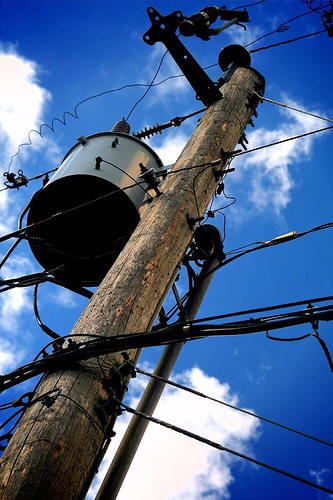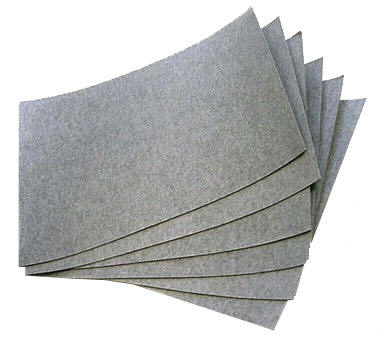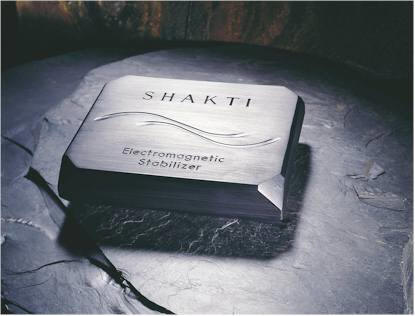|
You are reading the older HTML site Positive Feedback ISSUE 47january/february 2010
The Power Chronicles
Intro Like the average audio enthusiast, I don't need to be convinced of the merits of power cords and conditioners. They have an obvious influence on my system's performance. However, living in Houston, TX last summer taught me great things about power… notably thru the unfortunate fact of how badly my system sounded in the afternoons relative to the evenings. Well into winter of 2009, I note that the afternoons are not as bad as they were this summer, which is to imply a seasonal element to my power quality. Ugh! Thru a bit of internet research, I've come to understand and believe a few theories of why AC quality hurts our systems' performance when its quality is compromised. A list would include:
Of course, the list is not exclusionary. Indeed, they're each a problem of varying intensity and their collective impact may be greater than the sum of their parts. Who knows? While there may, may, be a combination of conditioners and cords that delivers perfect power, I've certainly not heard it. Well, some forward thinkers on the web (such as Alan Maher, www.alanmaherdesigns.com ) have come to the idea that it's not enough just to try to improve the power in your listening room, but why not treat the whole house? Egad. Will the madness ever end? Au contraire, this is quite logical: upstream of the listening room is the circuit breaker and the incoming grid wiring, and if there's work to improve the AC at the circuit breaker, via noise reduction or stabilization, it should lead to better power everywhere else. Once the power at the breaker is improved, power conditioners in the listening room can perform their magic on a better stream of raw material; no conditioner I've heard is perfect, so giving them better incoming AC to work on should give them a better output, no? Well, listening is the final arbiter. So without further ado, I submit the following points of circuit breaker box experimentation for your reading and listening pleasure: (Note: only a licensed electrician should perform installation of recommended tweaks, and at such time they should also verify the products advocated in this article are in compliance with your local electricity code to ensure compliance with your homeowners' insurance. Neither I nor Positive Feedback Online takes any responsibility if you attempt these tweaks yourself.) Dedicated Lines If you have not already done so, please commence AC tweaking here. Its hard to imagine the improvement that running a few dedicated lines to your equipment will make. Any electrician will be able to perform the work, and I'd suspect that in all but extremely difficult cases the total bill will be under a thousand dollars, but let me be clear, this will be the best bang-for-your-buck AC tweak of them all. Dedicated lines to your stereo provide your system an unshared source of electricity (i.e. the other appliances in your home are not on the same circuit). I note two substantial benefits: deeper / more articulate bass and a lower noise floor (which is heard in blacker backgrounds, sweeter treble and improved detail retrieval). While boutique audio-grade cable is available, any 12 gauge Romex wire that every electrician will have in their possession will get you 95% of the way there. All other breaker box tweaks pale in comparison. ERS
Manufactured by the same company that brings you the Stillpoints vibration control footers (www.stillpoints.us), ERS paper is, well, paper, found in 8” * 11” sheets, but its designed to absorb and shield against EMI & RFI. Trying it in or on top of my electronics was usually a bust, with internal application often times resulting in an objectionable removal of high frequency energy, while external application was often too subtle to reliably distinguish its effects. Well, after lining 1/3 of my circuit breaker box with ERS (note: the paper is conductive, so do not place it anywhere it can encounter multiple conductors) I did find a notable improvement in high frequency energy, a magnitude of change larger than that heard after hitting all your RCAs & XLRs with contact cleaner. Much like traditional power conditioning products, the ERS paper removes a layer of grunge riding in the treble; the resultant playback has a slight increase in low level detail, sweetness and ease of listening. For very little scratch ($25/ page), a few sheets will provide a nice little improvement for highly resolving stereos. EP 20500
The EP 2050 is perhaps the most novel and advanced of any AC conditioning products I've encountered. Manufactured by Environmental Potentials (www.ep2000.com) the EP2050 is a small device for use in residential circuit breaker boxes that targets 2 electricity gremlins: EMI pollution and transient voltage spikes (either low level spikes from switching power supplies on the grid or large spikes from grid interruptions/failures). The 2050 requires two unused 30 amp breakers in the breaker box for installation by a qualified electrician (a 30 minute job); its patent-protected technology is designed to actively absorb AC nasties, as the literature states that nothing is shunted to ground (which would still cause problems for home stereo performance, as ground is common to all devices and found in every interconnect). Environmental Potentials claims the unit absorbs noise on the AC line between 3kHz and 1MHz, which obviously should not be on a 60Hz sine wave (but is) and would be within the frequency range of normal audio playback; anyone with an oscilloscope testing the 60Hz wave coming out of the wall duplex will quickly confirm that the wave is not smooth at all—that's the noise I speak of. Additionally, the EP2050 provides whole-house surge protection, so for those with multiple rooms holding expensive electronics, the EP2050 should be considered solely for the surge protection benefits (as we all know MOVs in power strips are unreliable and sound like crap). While its hard to ignore the obvious benefits of sleeping better during thunderstorms, knowing the 2050 has your stereo safe from danger, the real impetus for my taking the unit for review is its audible impacts; while I cannot say that my stereo sounded dramatically better once the unit was installed, I can say that my stereo's sound is not "up and down" to the degree it was prior to the unit's installation. The EP2050, whether by virtue of EMI absorption or transient suppression, gives greater consistency to the quality of power my stereo receives, such that morning and afternoon listening sessions aren't disappointing and leaving me wishing I had 11pm-type power. The afternoons are no longer plagued with a whitish treble balance, a disjointed performance (like the sound of a badly designed crossover), or a collapsed soundstage. Better power, all the time, while protecting every electrical device in my whole house? Hello McFly, hello! This is a terrific little device that will reside in every home I ever buy; I can only suspect that Environmental Potentials is not getting its props from audiophiles simply because they're too busy focusing in the industrial and commercial markets to bother with our small fringe community. However, we should and do need products like this, and audiophiles everywhere should start inquiring within, pronto. Shakti Stones
Audiophiles everywhere know of this product by Ben Piazza (www.shakti.com), and I'm sure quite a few reading this article have Shakti Stones either on or under their existing electronics, or in their audiophile toolboxes gathering dust. Like the EP 2050, the Shakti Stone is a patent-protected design, but unlike the EP 2050 the Shakti Stones are passive and have no cables, no inputs, no outputs; it's just a block that absorbs EMI and RFI radiation. Used in traditional applications on electronics (by transformers and power supplies), the effects can be subtle to appreciable, but in no way consistent; some audiophiles will like and appreciate the difference, some will hear a sonic difference but consider it a step backwards. As with lots of products in our hobby, your mileage may vary. But I've read of a few audiophiles who have adventurously placed Shakti Stones in their breaker boxes to great effect, so I thought to give it a try. (I had no intention of this being a review of Shakti Stones in conventional locations on or around electronics in the listening room, but I'd be remiss if I didn't give my impressions. They clearly do something to the signal, and are clearly audible in a variety of locations, none more so than on my Fender tube guitar amp (oh my!). On electronics, I'd say it's probably a function of starting points; uber-gear like my EMM Labs CDSA didn't like the Stones, with treble attenuation dropping to an unacceptable darkness, but with my audiophile-modified Kenwood KT-8300 FM/AM tuner the Shakti Stones actually made a very positive improvement, reducing glare, grain and noise from the higher frequencies. If I had mid-fi gear that had sonic glare and caused listening fatigue, these Stones might be a good way to ameliorate those problems. But I'm here to talk about breaker boxes, so that's it.) One thing worth mentioning up front: the height of the Shakti Stones at 2" may make it prohibitive to place them directly inside the breaker box behind the panel, which is the ideal location. In my case, despite my considerable efforts, I was unable to place the two Shakti Stones behind the panel and next to the incoming AC from the grid, so my impressions are compromised by the locations I ultimately arrived at, which was between the panel and the door and at the junction box where my dedicated lines entered the house. Listening impressions were analogous to using the Shaktis on top of my components, but without the downside; high frequency playback was clearer and had less sibilance and grunge with the Shaktis in place. As with all tweaks to reduce AC noise, the Shaktis left the treble sounding sweeter; I frequently found cymbals had more brass and less white noise while the Shaktis were in the system. The effect was not jaw-dropping, but by the same token, I was physically limited by the location I could use them in, and my system already had a very low noise floor per all the other treatments I described formerly. For an audiophile who already has a Shakti or two in their system (or their audio toolbox), 15 minutes of experimentation with the Shakti Stones can result in a nice improvement in their treble tonality and the noise floor of their system.
|




